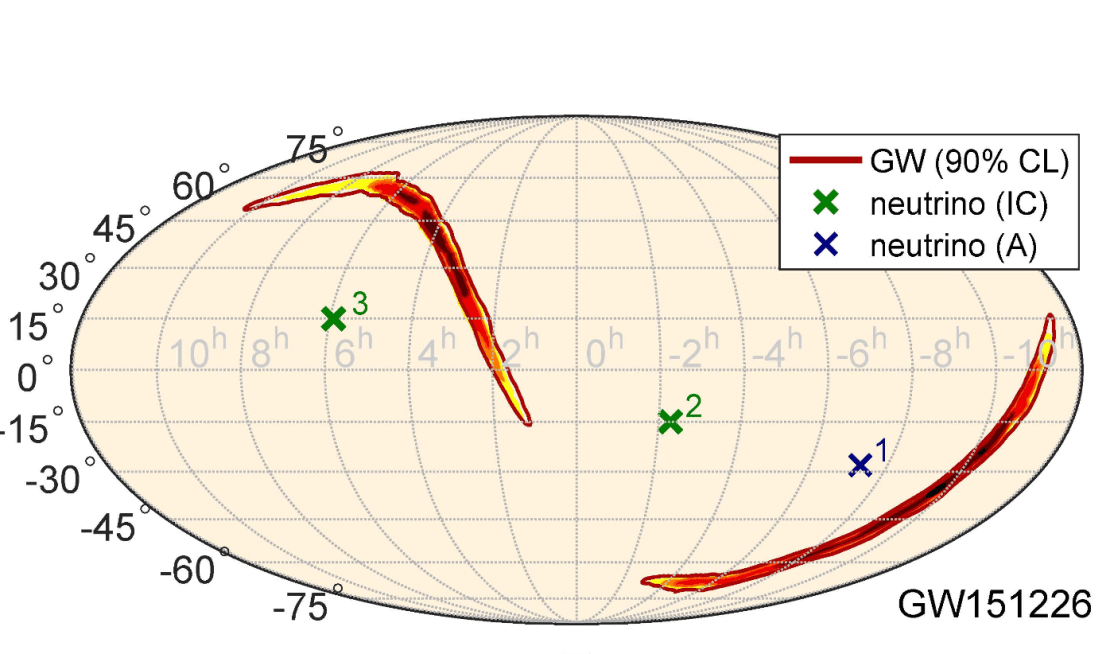In February 2016, in conjunction with the announcement of the first detection of gravitational waves (GWs), the IceCube, ANTARES, Virgo and LIGO collaborations reported a joint search for neutrino emission from the source of the first gravitational wave event from colliding black holes, detected in September 2015.
The four collaborations have now joined efforts to look for neutrino emission from a second GW event (GW151226) as well as from a previous GW candidate (LVT151012). IceCube and ANTARES searched for neutrinos in temporal coincidence and from the directional constraints provided by LIGO. Within 500 seconds around the two GW signals, no neutrino events were found that come within from the signal region in either detector. These results have recently been submitted to Physical Review D.

GWs, predicted by Albert Einstein in 1916, are ripples in space-time that propagate at the speed of light. Some sources of GWs can also emit neutrinos. The detection of a source with both GWs and neutrinos will tell us about dynamics in the central region as well as the processes powering relativistic outflows.
LIGO consists of two interferometers, one in Livingston, LA, and another in Hanford, WA. The twin LIGO detectors allow not only identifying the origin of a gravitational wave in a 2D map but also measuring the distance from the source. This creates a 3D source volume that makes follow-up observations for neutrino or electromagnetic emission much more efficient.
The sources of the two studied GW signals are binary black hole (BBH) mergers. Most BBHs are not expected to emit neutrinos, because they lack sufficient matter orbiting the binary system. However, in some cases, such us binaries in active galactive nuclei (AGNs), BBHs may also produce neutrinos. AGNs are compact regions at the center of galaxies with inflowing gas.
The nonobservation of neutrino emission from the sources of the GW event and candidate constrains emission models for this type of GW source. Using the time, amplitude, and phase differences between the detection of the same GW in both of the LIGO detectors, physicists can also estimate the distance to the source.
In the current study, scientists have set the first limits for neutrino emission from 3D-localized GW sources. New observations by the Advanced LIGO-Virgo network will allow probing neutrino emission from small populations of mergers anywhere in the sky, including regions not accessible to electromagnetic telescopes. Future GW observations could also include gamma-ray bursts or core-collapse supernovas, which are also expected to produce astrophysical neutrinos.
+ info ” Search for High-energy Neutrinos from Gravitational Wave Event GW151226 and Candidate LVT151012 with ANTARES and IceCube,” The ANTARES Collaboration, the IceCube Collaboration, the LIGO Scientific Collaboration and the Virgo Collaboration. Physical Review D D96 (2017) 022005, journals.aps.org arXiv.org/abs/1703.06298